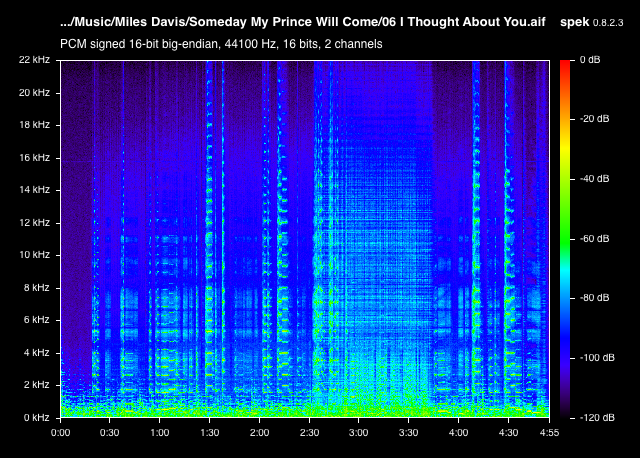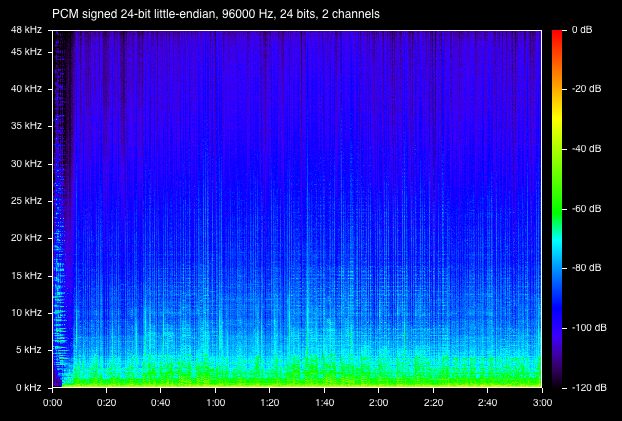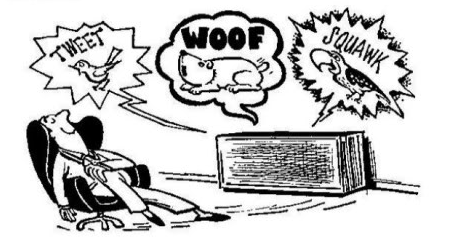tuga
Legal Alien
a track from Miles Davis superb Someday My Prince Will Come
Here's one taken from a CD:

a track from Miles Davis superb Someday My Prince Will Come


I have heard it on a few hard domes, testing with lowish level tones.What speaker exhibits this, and what material is it obvious with?
I brought a small storage crate full of familiar music to the half-day session. Including music that produced undesirable bass effects with my then loudspeakers - Proac D15s (about 20 litres internally with a 6.5-inch mid-woofer and a downward firing port).That has not been my experience.
Perhaps your opinion would be different if you'd made a more meaningful comparison with a sealed box SCM50A which, alas, doesn't exist...
Did you listen with familiar tracks of classical music? I guess it ultimately depends on your references and which particular aspects of performance you are more sensitive to.
A driver can produce low frequencies by having either a large cone surface area (in a large box) or a long-excursion suspension (in a smaller box).
If I'm not mistaken, and generally speaking, a small long-excursion woofer produces more harmonic distortion and more intermodulation distortion and compression at lower listening levels and is less sensitive.
The only reason for the existence of small long-woofers is the demand for small speakers. But you also need a big box to produce low frequencies hence the crutches (TL, bass-reflex) which have the welcome side effect of increasing sensitivity a little and easying the load.
My view is that sound should be produced by a driver and fitness for purpose is the key here: tiny tweeters, mid-sized squawkers and large woofers...and sub-woofers for sub-bass.
This image was taken from a vintage Kef user manual:

P.S.: dividing the spectrum over different dedicated drivers or ways reduces intermodulation distortion and ensures that each driver is operating within it's optimal range (avoiding nasty break-up resonances and the need for complex notch-filter with the bonus of a smoother off-axis response).
I'd say that the sweet-spot is a 3-way speaker though one would really need 4 ways (and a large) to accurately cover the whole 20Hz to 20kHz audible spectrum.
The reason i like small drivers is for their coherence and speed - compared to their much larger muddy cousins
That's a myth.
well yeah - what on earth would MASS have to do with acceleration?
I brought a small storage crate full of familiar music to the half-day session. Including music that produced undesirable bass effects with my then loudspeakers - Proac D15s (about 20 litres internally with a 6.5-inch mid-woofer and a downward firing port).
The back story is that I had critically evaluated what I did not like about my D15s to guide my listening tests for their replacements. And I had created a priority list of things I wanted to get fixed. That included fixing what seemed to me to be poor bass transient behaviour.
I was aware of the memes associated with ported loudspeakers and started looking at sealed candidates. The comparison I made above was meaningful enough to tell me that in reality I didn't need to insist on a sealed loudspeaker to fix the "conventional wisdom" problems always associated with ported ones. I just had to find loudspeakers with better implemented ports if they had them.
As I hear it a small driver moving a small distance is faster than a large driver moving a similarly small distance, but a large driver moving a small distance is far faster and less distorted than a small driver moving a large distance. What one never wants to see is a lot of driver travel as that equates to distortion, sluggishness, pitch aberration etc. As such it all relates to desired volume and listening distance.
PS This is especially the case in two-ways where the very last thing one wants is the crucial mid-band coming from a driver wildly bobbing in and out trying to do bass!
Long excursion drivers have to sound slower and more smeared because it takes much longer for them to return to centre after a transient before they can reproduce the next transient.
They aren't in free fall on the return leg of a transient they are under control.Yes that has certainly been my experience.A short excursion high efficiency 15 or 18 inch woofer which does not attempt to go too low tends to produce the most precise and textured bass.Long excursion drivers have to sound slower and more smeared because it takes much longer for them to return to centre after a transient before they can reproduce the next transient.
